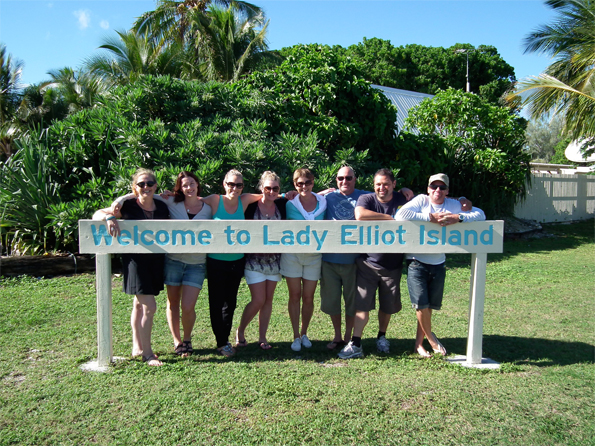They call Lady Elliot Island the Great Barrier Reef’s best-kept secret and I already feel as though I’ve stumbled on a real treasure. The island is a lush green dot, an almost perfect circle, in the middle of an azure ocean.
I spot its famous giant manta rays from our tiny plane as we come in to land; the water’s crystal clear, the rays glide elegantly over the coral reef. I’m greeted by a cloud of the island’s resident noddy terns. They’ve nested here for hundreds of years and they seem completely unperturbed by we humans.
Lady Elliot is the southernmost of five wooded coral cays on Australia’s Great Barrier Reef. It’s smack bang in the middle of a green zone – a protected area where no fishing is allowed. The diving here is action packed. The island’s tourist lodge is eco-friendly.
The owner, Peter Gash, is determined his operation will cause minimal disturbance, so he has created his own solar power station and cut his diesel use by half. He has his own desalination plant to create fresh water and he recycles pretty much everything.
The first thing that strikes me about the place is its relaxed laid-back atmosphere. It’s like the Kiwi bach used to be – comfy, unpretentious. The cabins and fixed tents are dotted about among pandanus and casuarinas, with the beach just a few steps away. It takes about 45 minutes to walk the entire island. I let Lady Elliot work her magic. There’s no cellphone coverage, no computers, no television.
I am lulled to sleep by the sound of the waves rolling onto the reef and the gentle twittering of the nesting noddies. The sounds wake you in the morning in the same way. Lady Elliot is a turtle breeding ground. If you’re lucky, between January and April, you may experience something truly wonderful. I am very lucky.
The moon is full. I’m heading down the beach to take a night trip on the reef when I notice the sand beginning to bubble around my feet. Then, suddenly, out pop dozens of tiny turtles, about half the size of my hand. They have just this minute hatched. They seem to instinctively know where to head – straight to the ocean.
They look so vulnerable, struggling over what must look to them like mountainous lumps of coral. They have a tough road ahead these little chaps. Only one in a 1000 will survive the epic journey they’re embarking on. They head out alone into the East Australian Current that will take them around the world.
In a miracle of nature, the survivors will return to this very beach to complete the cycle and lay their eggs in 30 or 40 years time. We help them on their way, the other guests and I, shining our torches, making a kind of tunnel between our legs.
The turtles are attracted to the light. It’s incredibly moving to be part of something like this. That’s the thing about Lady Elliot – you really do feel as if you’re at one with nature, that everything has its place and all is well with the world.





